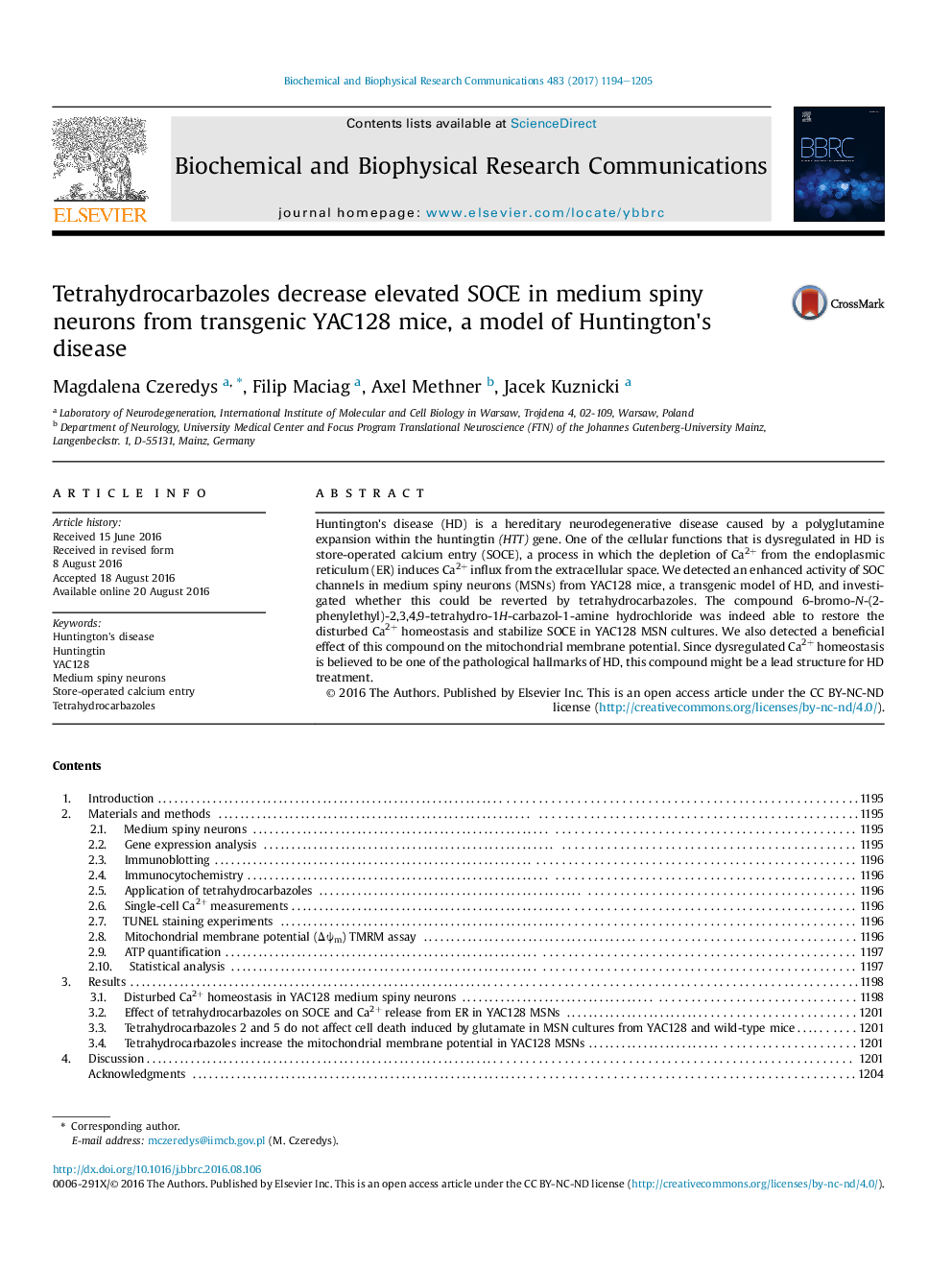| کد مقاله | کد نشریه | سال انتشار | مقاله انگلیسی | نسخه تمام متن |
|---|---|---|---|---|
| 5506433 | 1400294 | 2017 | 12 صفحه PDF | دانلود رایگان |

• Mutated HTT affects Ca2+ signals in MSNs from HD mouse model, but not in glial cells.
• SOCE and Ca2+ release from ER increase in MSNs from HD mice compared to control MSNs.
• One studied tetrahydrocarbazole rescues the abnormally increased SOCE in YAC128 MSNs.
• The studied compound improves the mitochondrial membrane potential in MSNs.
Huntington's disease (HD) is a hereditary neurodegenerative disease caused by a polyglutamine expansion within the huntingtin (HTT) gene. One of the cellular functions that is dysregulated in HD is store-operated calcium entry (SOCE), a process in which the depletion of Ca2+ from the endoplasmic reticulum (ER) induces Ca2+ influx from the extracellular space. We detected an enhanced activity of SOC channels in medium spiny neurons (MSNs) from YAC128 mice, a transgenic model of HD, and investigated whether this could be reverted by tetrahydrocarbazoles. The compound 6-bromo-N-(2-phenylethyl)-2,3,4,9-tetrahydro-1H-carbazol-1-amine hydrochloride was indeed able to restore the disturbed Ca2+ homeostasis and stabilize SOCE in YAC128 MSN cultures. We also detected a beneficial effect of this compound on the mitochondrial membrane potential. Since dysregulated Ca2+ homeostasis is believed to be one of the pathological hallmarks of HD, this compound might be a lead structure for HD treatment.
Journal: Biochemical and Biophysical Research Communications - Volume 483, Issue 4, 19 February 2017, Pages 1194–1205